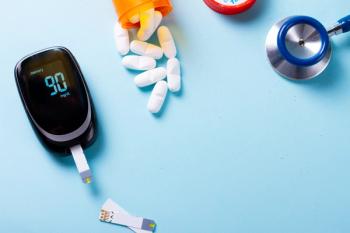
Study: Efficacy and Safety of Omnipod 5 Automated Insulin Delivery System in Young Children With Type 1 Diabetes
At the virtual Scientific Sessions for the American Diabetes Association, Jennifer Sherr, MD, discussed the findings of a study of the Omnipod 5 automated insulin delivery system in very young children with type 1 diabetes.
From our sister publication,
Jennifer Sherr, MD, an associate professor in pediatrics at the Yale School of Medicine, led a discussion at the virtual Scientific Sessions for the American Diabetes Association on a study examining the benefits of the Omnipod 5 delivery system for very young children with type 1 diabetes. The study's objective was to evaluate the safety and efficacy of the Omnipod 5 system in children aged 2 to 5.9 years. The multicenter, single-arm outpatient study included 80 participants at 10 institutions across the United States. Participants had been diagnosed with type 1 diabetes, had an HbAc of less than 10% at the screening visit and had prior insulin therapy, such as continuous subcutaneous insulin infusion or multiple daily injection.
Sherr began her presentation by explaining how the Omnipod 5 System works. The delivery system communicates directly with Dexcom G6 sensor for a continuous glucose monitor. An algorithm is built into the pod, so that the insulin delivery can continue without the handheld controller nearby. The Omnipod 5 app is used to start and stop atuomated mode, deliver boluses, view data, and change settings. It includes customizable glucose targets, with a HypoProtect feature for times of elevated hypoglycemic risk (such as exercise).
After 3 months of use of the automatic insulin delivery (AID) system, 54% of the participants had an HbA1c of less than 7%, compared with 31% at baseline.
Additionally, there was improved sleep quality for parents and caregivers, with the percentage reporting overall sleep quality as "very good" or "fairly good" increasing fro 65% at baseline to 90% with the tubeless AID system. "Very bad" sleep quality, which was reported by 8.8% of the cohort at baseline, fell to 0% with the tubeless AID. Finally, there was no reported severe hypoglycemia or diabetic ketoacidosis during the 3-month AID phase of the study.
Sherr concluded that the Omnipodi 5 AID system was safe and performed well in very young children with T1D for 3 months at home.
Reference
1. Sherr, J. Evaluation of the Omnipod 5 automated insulin delivery system in very young children with type 1 diabetes (T1D). American Diabetes Association Scientific Sessions 2021; June 26, 2021; virtual. Accessed June 26, 2021.
Newsletter
Pharmacy practice is always changing. Stay ahead of the curve with the Drug Topics newsletter and get the latest drug information, industry trends, and patient care tips.






































































































































